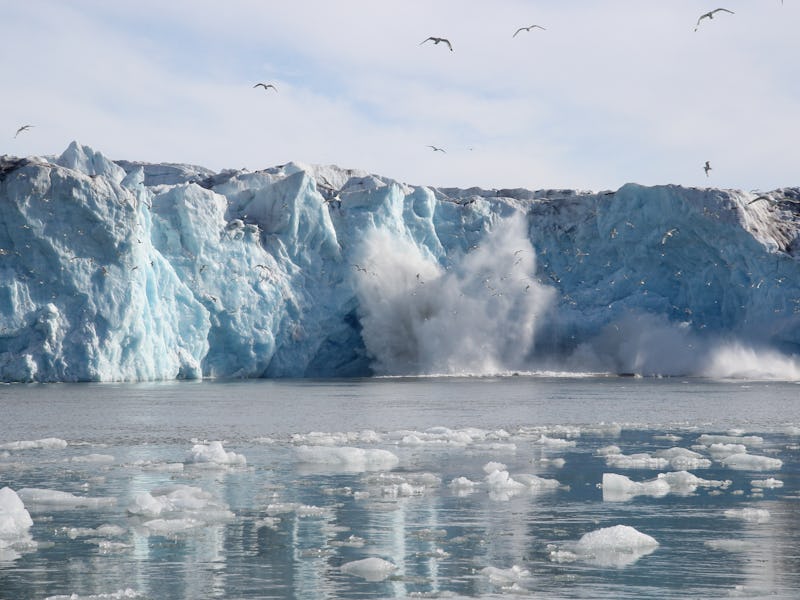Calm Down, the Larsen C Iceberg Isn't a Climate Catastrophe
Iceberg calving is normal. It's what might happen next that you should worry about.

The calving of a Delaware-sized iceberg off of Antarctica’s Larsen C ice shelf signals the climate apocalypse, or so many unscrupulous internet sites would have you believe.
Indeed, 350.org has launched a petition to name the iceberg #ExxonKnew to make explicit the connection between fossil fuel burning, global warming, and this major calving event.
There’s just enough truth in this myth to give it legs, and yet it is fundamentally unscientific. Iceberg calving, even on a massive scale, is a perfectly normal and expected part of an ice shelf’s life cycle in a stable climate system. There are plenty of reasons to be worried about the future of Larsen C and the Antarctic continent, but if you’re focused on the iceberg, you’re looking at the wrong thing.
Ice shelves are exactly what they sound like — a wide and flat sheet of ice that floats out over the ocean but is still attached to ice on land behind it. They are fed by glaciers flowing behind them, and calve off at the front. Antartica has many ice shelves; the largest is bigger by area than California.
Was the progress of the crack in Larsen C that broke off this iceberg accelerated by climate change? Probably. Would the event have occurred eventually without global warming? Certainly — though the timing and magnitude may have been different.
The reason scientists are so interested in the Larsen C ice shelf is not so much because of the calving event but because of what might happen next.
Global warming didn’t make the iceberg, but it is causing thinning of the ice shelf from both sides, with warmer air above and warmer ocean below. There’s evidence that the whole thing is less stable than it used to be, and could be vulnerable to a collapse, like the one seen at neighboring Larsen B in 2002.
A collapse is essentially a series of calving events that quickly take away a large section of an ice shelf. Unlike a normal calving event, ice shelves are not expected to grow back after such a collapse. They are fundamentally and permanently altered, at least until the world’s temperature goes back down.
If Larsen C collapses, it could signal that all of Antarctica’s ice shelves are a lot more vulnerable than many expected. This has important consequence for sea level rise, since without ice shelves holding them back, glaciers flow into the ocean much faster.
Antarctica did not just collapse, but some scientists warn that it could over the coming decades and centuries if climate change is not reigned in. In all, Antarctic ice could contribute 50 feet of sea level rise, if it were to melt away completely.
How quickly that future is coming matters a great deal to island nations and coastal cities already swamped by rising seas. And the worst it yet to come.